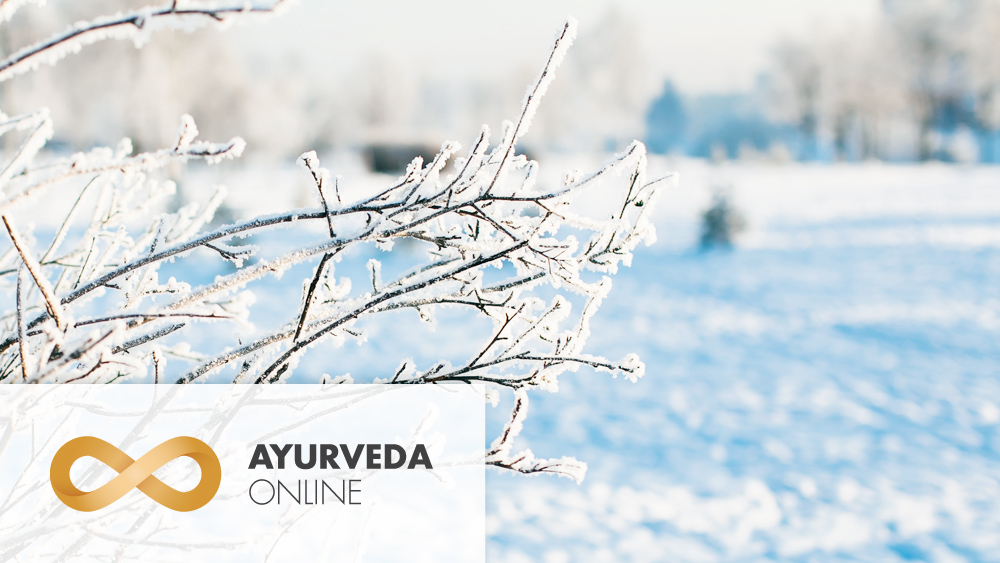Ayurveda is often reduced to bodily constitutions and we are usually most interested in finding out our ‘type’. While it is fascinating to delve into profiling and how uncannily similar constitutional types bear resemblance to each other, we are reminded that Ayurveda is of course about a lot more than this. When applied in its fullness, it encourages a full life, ‘play’ with the universe and liberation in the sense of emancipation from the roots of all misery. It’s pretty robust in its ambitions and offers tremendous insight into living well if we allow it to.
But to return to our fascinations with the physical body, in identifying three primary bodily functions, Ayurveda proposes that we are all composed of all the elements of the universe. Not only do we all contain all five Ayurvedic elements (space, air, fire, water and earth), we also each embody their combinations in ways that allow for a physical body in the first instance with structure and form (kapha), the possibilities of transformation and digestion (pitta) and that of movement (vāta). While the various combinations of these present for endless teachings and study, what is less explored is the subtle essences of these functions, their universal correlations. Vāta is associated with the life force (prana), pitta with the energy of transcendence (tejas) and kapha with spleandour, immunity, creation and reproduction (ojas).
The subtle essences offer an alternative lens through which to see the world:
Ojas – the essence of form
For anything to exist in the living universe, it assumes form. All form arises from spacious stillness or from creativity. In the case of the human form, we think of this in the physical terms of procreation, but fail to ponder the information that goes into a living being. We also dismiss the ways in which these forms of life inter-relate, assuming that our bodies end at the barriers of our skins with little regard for how we are interacting at deeper, sub-conscious levels of being. We are also forgetful of the creativity underway in every moment – how the form is changing from a cellular level to the very expression of breath through which we expel sloughed cells.
Tejas – the essence of transformation and transcendence
Absorbed by the physical form, we often fail to embrace the power of transformation, evident in each moment. The ability to think differently, to change our minds, to change direction are all illustrations of tejas, the living transformer that gives us hope in escaping the shackles of suffering. Whatever our circumstances, we are able to develop different ways of seeing, to transform our perspectives and to feel differently. In fact, the essence of food is transformed into the living form which itself is constantly changing, inter-linking tejas and ojas.
Prāna – the essence of vitality
The mover and shaker of life is likened to this force without which the universe is believed impossible. The breath of life is our crude association with prāna, yet even here, it is common to forget the shared breath, the shared universe, the collective. Our motivations and desires are guided by this essence which motivates us to action. It is believed to be the foundation behind all movement in the universe – thoughts, emotions, sensations are said to occur on the back of prāna. The physical body (ojas) is, at one level, believed to be a container for prāna, which moves perception (tejas). The subtle essences all inter-relate providing a map from the gross physical to the subtler bodies of being.
So what of all this? When we think of who we are, we are inclined to reproduce the very thinking that keeps us divided and separate. We go to our physical bodies as home. Yet these bodies come and go just like the breath. As long as they are our chariots, we are better able to care for them when we see their vitality, their subtleties and their invitation to live in community and harmony with ourselves, our communities and the world.
On the Living Well course, there is ample opportunity to work at the level of the physical body. We encourage this exploration as the primary hook in our conditioning. We also encourage a deeper inquiry into what this body is and who we are beyond the limitations of the physical body.
Further Information
This is the third and final in a series of articles on the value of Ayurveda in the modern world. They highlight CMI’s promotion of Ayurveda as part of the wisdom traditions. We employ mindfulness and yoga to bring Ayurveda to life.
Please visit our sister site for more information on Ayurveda and how you can train in person and online.
What are your thoughts? We’d love to hear your thoughts, experience or issues with this topic. Please leave your comments below…





Leave A Comment